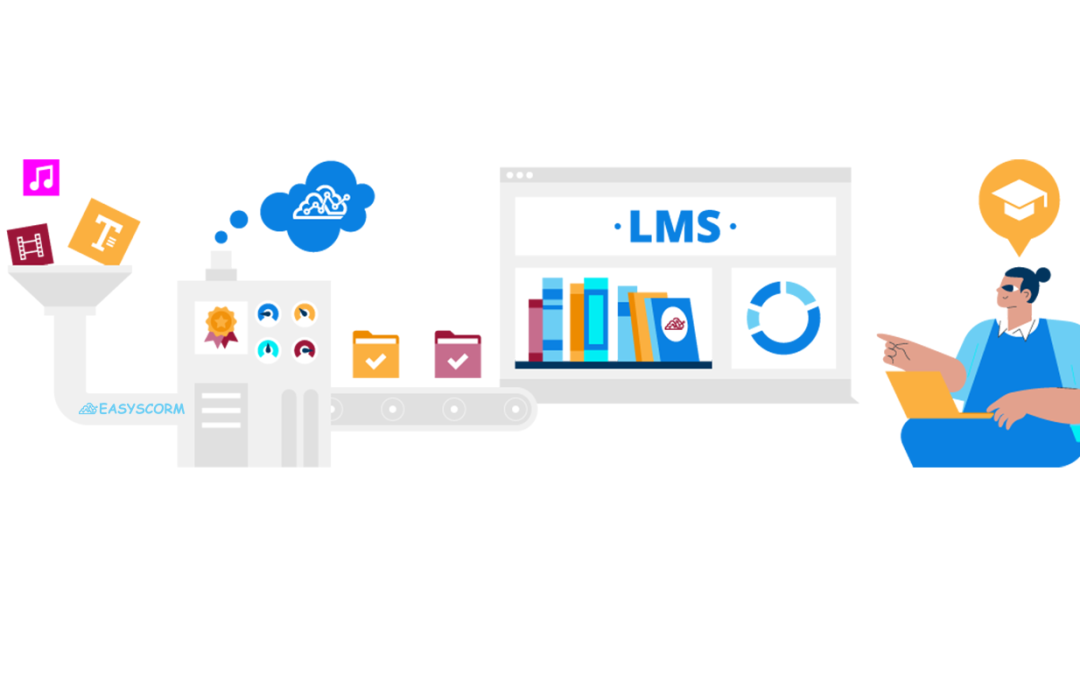What is SCORM?
SCORM is a collection of standards and specifications that enable interoperability between e-learning software products. It was introduced in 2000 by the Advanced Distributed Learning (ADL) Initiative, a project funded by the US Department of Defense. The main goal of SCORM is to allow e-learning content to be developed once and then used across multiple learning management systems (LMS) and platforms. SCORM-compliant e-learning content can be easily shared and reused, providing a more cost-effective and efficient way of delivering training and education.
Historical Background
Before the introduction of SCORM, e-learning content was typically developed using proprietary technologies and formats specific to a particular LMS. This made it difficult to share and reuse e-learning content across different platforms, which limited its potential impact and made it less cost-effective.
The development of SCORM was driven by a desire to overcome these limitations and create a standard that could be universally adopted and used to develop interoperable e-learning content.
How SCORM Works
SCORM defines how e-learning content should be packaged, delivered, and tracked. It consists of rules and guidelines that dictate how e-learning content should be structured and how it should communicate with an LMS. This means any content developed in compliance with SCORM will work seamlessly with any LMS that also adheres to the standard.
SCORM-compliant e-learning content is typically packaged in a zip file containing all the necessary files and resources needed to deliver the content. The package includes an XML file that contains metadata about the content, such as its title, description, and learning objectives. The package also includes a set of JavaScript files that enable the content to communicate with the LMS and track learner progress.
Use Cases for SCORM
SCORM has several use cases across various industries and sectors. Here are some examples:
Corporate Training
In corporate training, SCORM allows companies to develop standardized training modules that can be delivered to employees across different departments and locations. This can be particularly useful for large organizations with dispersed workforces. SCORM-compliant e-learning content can be accessed from any location and device, making it a flexible and cost-effective way to deliver training.
Education
SCORM enables educational institutions to create and share e-learning content with students, regardless of their LMS. This can be particularly useful for students taking courses from multiple institutions or enrolled in online programs that use different platforms.
Government Agencies
In government agencies, SCORM ensures that all employees receive consistent and standardized training. This can be particularly important for agencies that require employees to have specific skills or certifications. SCORM-compliant e-learning content can be used to develop training modules that meet these requirements and can be easily delivered to employees across different locations.
Benefits of SCORM
SCORM has several benefits for organizations that use e-learning content to deliver training and education. Here are some examples:
Interoperability
SCORM-compliant e-learning content can be used across multiple LMS and platforms, which makes it a more cost-effective and efficient way to deliver training and education. This also makes it easier to share and reuse content, which can save time and resources.
Detailed Tracking and Reporting
SCORM-compliant e-learning content can track and report various metrics, including completion rates, time spent on each activity, and assessment scores. This allows instructors to monitor learner progress and identify areas where additional support may be needed.
Flexibility
SCORM can be used with various content types, including text, images, audio, and video. This means that organizations can develop engaging and interactive e-learning content that meets the needs of different learning styles and preferences.
Improved Learner Engagement
SCORM-compliant e-learning content can include interactive elements like quizzes, simulations, and games. These elements can improve learner engagement and retention, making the learning experience more enjoyable and effective.
The Takeaway
In conclusion, SCORM has been widely adopted across industries and sectors as a standard for developing interoperable e-learning content. Its use has enabled organizations to deliver training and education cost-effectively and efficiently, improving learner engagement and tracking. As e-learning continues to evolve, SCORM remains an important standard that ensures the compatibility and interoperability of e-learning content.

